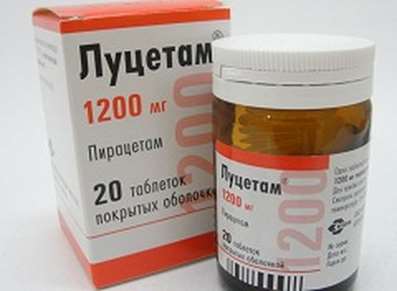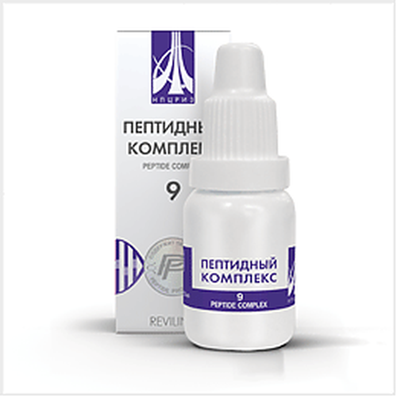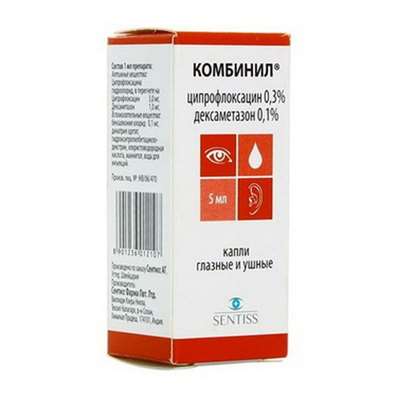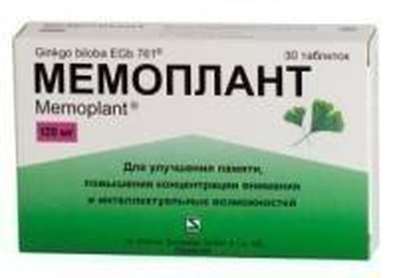Instruction for use: Carbo activatus
I want this, give me price
Active substance:Activated charcoal
ATX code A07BA01 Activated charcoal
Pharmacological group
Detoxifying agents, including antidotes
Adsorbents
Nosological classification (ICD-10)
A02.9 Salmonella infection, unspecified
A05.9 Bacterial food poisoning, unspecified
Bacterial intoxication, Diarrhea with food intoxication, Acute diarrhea in food poisoning, Nutritional intoxication, Food poisoning, Foodborne diseases, Toxic food insecticide, Toxic diarrhea
A09 Diarrhea and gastroenteritis of allegedly infectious origin (dysentery, bacterial diarrhea)
Bacterial diarrhea, Bacterial dysentery, Bacterial infections of the digestive tract, Bacterial gastroenteritis, Diarrhea bacterial, Diarrhea or dysentery of amoebic or mixed etiology, Diarrhea of infectious genesis, Diarrhea on the background of antibiotic therapy, Traveler's Diarrhea, Travelers diarrhea due to changes in diet and habitual diet, Diarrhea due to antibiotic therapy, Dysenteric bacteriocarrier, Dysenteric enteritis, Dysentery, Dysentery bacterial, Dysentery mixed, Gastrointestinal infection, GI tract infections, Infectious diarrhea, Infectious Disease of the GI tract, Infection of the gastrointestinal tract, Infection of the biliary tract and gastrointestinal tract, GI tract infection, Summer diarrhea, Nonspecific acute diarrhea of infectious nature, Nonspecific chronic diarrhea of infectious nature, Acute bacterial diarrhea, Acute diarrhea in food poisoning, Acute dysentery, Acute bacterial gastroenteritis, Acute gastroenterocolitis, Acute Enterocolitis, Subacute dysentery, Diarrhea chronic, Refractory diarrhea in AIDS patients, Staphylococcal enteritis in children, Staphylococcal enterocolitis, Toxic diarrhea, Chronic dysentery, Enteritis, Enteritis infectious, Enterocolitis
B19 Viral hepatitis, unspecified
Anicteric hepatitis, viral hepatitis, Viral hepatitis in children, Infection of the liver, Acute liver infection
E88.9 Metabolic disorders, unspecified
Hypermetabolic conditions, Correction of metabolism in elderly and senile age, Metabolic disease, Violation of metabolic processes, Inadequacy of 3-hydroxyacyl-CoA dehydrogenase, Insufficiency of respiratory chain enzymes, Normalization of metabolic processes in the body
F10.3 abstinence
Alcohol withdrawal syndrome. abstinence symptom, Abstinence syndrome in alcoholism, abstinence, alcohol Abstinence, alcohol withdrawal, Alcohol abstinence, Alcohol withdrawal syndrome, postabstinentnom disorder, postabstinentnom state, alcohol withdrawal syndrome, withdrawal syndrome, The syndrome of alcohol abstinence, alcohol withdrawal syndrome, Status of abstinence
J45 Asthma
Asthma physical effort, status asthmaticus, Bronchial asthma, Asthma lung flow, Bronchial asthma with obstruction of sputum discharge, Bronchial asthma heavy currents, Bronchial asthma physical effort, hypersecretory asthma, Hormone-dependent form of bronchial asthma, Relief of asthma attacks in bronchial asthma, Non-allergic asthma, nocturnal asthma, Exacerbation of asthma, Asthma attacks, Endogenous forms of asthma, Night asthma, Cough with bronchial asthma
K29.7 Unspecified gastritis
Gastritis with low acidityá Gastritisá Gastritis with a normal secretory functionáGastritisá Erosive gastritis
K30 Dyspepsia
Fermentation dyspepsia, Hyperacid indigestion, Putrefactive indigestion, Dyspepsia, Dyspepsia, Dyspepsia of nervous origin, Dyspepsia in pregnant women, Dyspepsia fermentation, Dyspepsia putrefactive, Dyspepsia medication, Dyspepsia due to diseases of the digestive system, Dyspepsia due to impaired motility of the gastrointestinal tract, Dyspepsia due to unusual food or overeating, Dyspeptic phenomena during pregnancy, Dyspeptic Syndrome, Gastric indigestion, Delayed emptying of the stomach, Delayed digestion, Idiopathic indigestion, Acid dyspepsia, Disturbance of the upper GI tract motility, Indigestion, Nervous indigestion, Non-ulcer dyspepsia, The feeling of heaviness in the stomach after eating, Postprandial functional dyspepsia, The processes of fermentation in the intestine, Stomach upset, Gastrointestinal disorders, Digestive disorders, Disorders from the digestive tract, Stomach upset, Indigestion disorder, Indigestion in infants, Symptoms of dyspepsia, The syndrome of putrefactive dyspepsia, Syndrome of putrefactive dyspepsia in infants, Syndrome of insufficiency of digestion, Syndrome of nonulcer dyspepsia, Toxic indigestion, Functional dyspepsia, Functional indigestion, Chronic indigestion, Chronic episodes of dyspepsia, Essential dyspepsia, Dyspeptic disorder
K31.8.2 * Hyperacidity of gastric juice
Pathological hypersecretion, Hyperacid indigestion, Hyperadic states, Increased secretion of gastric juice, Increased acid formation, Hyperacidosis,Hyper secretion of gastric juice, Increased acidity of gastric juice, High acidity
K59.1 Functional diarrhea
Diarrheal syndrome, Diarrhea, Diarrhea with prolonged enteral feeding through the probem, Prolonged diarrheam Nonspecific diarrhea, Acute diarrhea, Diarrhea, Syndrome of diarrhea, Functional diarrhea, Chronic diarrhea, Diarrhea with an electrolyte balance disorder, Chronic diarrhea, Diarrhea of non-
K73.9 Chronic hepatitis, unspecified
Chronic hepatitis, Chronic hepatitis with signs of cholestasis, Inflammatory liver disease, Infection of the liver, Chronic reactive hepatitis, Chronic inflammatory liver disease, Hepatitis chronic
K74.6 Other and unspecified liver cirrhosis
The intrahepatic block, Parenchymal hepatitis, Portal cirrhosis of the liver, Fitz-Hugh-Curtis syndrome, Cirrhosis, Cirrhosis of the liver, Cirrhosis of pigment
K81.1 Chronic cholecystitis
Chronic gallbladder disease, Chronic galloping cholecystitis
K86.8.2 * Cholecystopancreatitis
K94 * Diagnosis of gastrointestinal diseases
Liver-spleen scan is, The visualization of the liver using invasive methods, Isotope hepatoscintigram, Celiocentesis, examination of the liver, Magnetic resonance imaging of the liver, Computed tomography of the liver, Esophageal manometry, Anoscopy, Visualization of biliary tract, liver ultrasound visualization, Gastroscopy,degassing bowel before diagnostic studies, degassing intestine before X-rays, Diagnosis of the gastrointestinal tract, Diagnosis of bleeding from the small intestine, Diagnosis of focal lesions of the liver, Diagnosis secretory capacity and gastric acid-function, Diagnostic procedures on the colon, duodenal intubation, duodenoscopy, Instrumental examinations of the abdominal cavity, Intraoperative cholangiography, Irrigoscopy, The study of gastric secretion, GI study, Investigation of acid-forming function of the stomach, The study of gastric secretory function,Colonoscopy, Monitoring the effectiveness of lithotripsy, Determining the degree of hypersecretion of duodenal ulcer, Preparation for diagnostic tests, Preparing to X-ray and instrumental methods of investigation of the abdominal cavity, Preparing to X-ray and ultrasound of the abdominal cavity, Preparing to X-ray or endoscopic gastrointestinal investigations, Preparing to X-ray study of the gastrointestinal tract with contrast, Preparing to X-ray study of the gastrointestinal tract with barium, Preparing to X-ray examination and ultrasound of the abdomen, Preparing to X-ray examination and ultrasound of the abdomen, Preparation for ultrasound and X-ray examination of the abdominal cavity, Preparation for endoscopic examination of the lower large intestine,Preparation for endoscopic or X-ray examination of the lower intestine, Prepare to lower GI endoscopy, Preparation of the colon to the instrumental and radiological investigations, Preparation of the colon to the x-ray and endoscopy, sigmoidoscopy, rectoscopy, GI Radiography, X-ray diagnosis of esophageal achalasia,Radiology gastrointestinal diseases, Radiology of the digestive tract, Rentgenocontrast study biliary tract, Rentgenocontrast study GI, X-ray diagnosis of the gastrointestinal tract, X-ray gastrointestinal studies, X-ray examination of the duodenum and gall bladder, X-ray examination of the stomach, X-ray examination of the biliary tract and gall bladder, X-ray study of the gastrointestinal tract, X-ray examination of the esophagus, retrograde cholangiopancreatography, Endoscopic Retrograde pankreatoholangiorentgenografiya, Sonography of the digestive tract, hepatosplenography, Ultrasonography of the abdomen, Functional X-ray diagnostics for diseases of the stomach,Functional X-ray diagnosis with bowel diseases,cholangiography, Cholangiography in cholelithiasis, cholangiopancreatography, cholecystography,esophagoscopy, Endoscopic retrograde pancreato, Endoscopic retrograde cholangiopancreatography, Endoscopic intervention, Endoscopic examinations of the digestive system, Endoscopic examination of the lower large intestine, GI Endoscopy, endoscopy, ERCP, Panendoskopiya
L20 Atopic dermatitis
Itchy atopic eczema, Common neurodermatitis, Allergic skin diseases, Allergic skin diseases of non-infectious etiology, Allergic skin diseases of non-microbial etiology, Allergic skin diseases, Allergic skin lesions, Allergic manifestations on the skin, Allergic dermatitis, Allergic diathesis, Allergic itching dermatosis, Allergic Skin Disease, Allergic skin irritation, Dermatitis allergic, Atopic dermatitis, Dermatosis allergic, Diathesis exudative, Skin Allergic Disease, Skin allergic reaction to medicinal and chemical preparations, Skin reaction to medication, Skin and allergic disease, Acute eczema, Chronic atopic dermatitis, Exudative diathesis, Itching allergic dermatosis
N19 Renal failure, unspecified
Hyperazotemia, Uremia, Renal failure in poisoning
R14 Flatulence and related conditions
abdominal distention, flatulence, pronounced flatulence, Gases in the postoperative period, degassing bowel before diagnostic studies, degassing intestine before X-rays, gas delay, Excessive formation and accumulation of gases in the digestive tract, brash, Flatulence, Flatulence with increased gas formation in the digestive tract, Flatulence in infants, Flatulence in newborns, Flatulence caused by fatty or unusual food, Flatulence caused by disease of the digestive tract, belching, The feeling of bloating, The feeling of fullness, Increased flatulence, The increased gas formation and accumulation of gases in the digestive tract, Fullness in the epigastrium, Feeling of fullness, The feeling of heaviness in the stomach, Flatulence in the gastrointestinal tract, Increased production and accumulation of gases in the digestive tract
T30 Thermal and chemical burns, unspecified
Pain syndrome with burns, Pain in burns, Pain with burns, Sluggishly healing post-burn wounds, Deep burns with a wet scab, Deep burns with abundant compartments, Deep burn, Laser burn, Burn, Burn of rectum and perineum, Burn with mild exudation, Burn disease, Burn injury, Superficial burn, Superficial burn of I and II degree, Superficial skin burns, After-burn trophic ulcer and wound, Post-burn complication, Loss of fluid in burns, Sepsis burn, Thermal burns, Thermal skin lesions, Thermal burn, Trophic after-burn ulcers, Chemical burn, Surgical burn
T43 Poisoning by psychotropic drugs, not elsewhere classified
Intoxication with psychotropic drugs
T46.0 Poisoning with cardiac glycosides and preparations of similar action
Arrhythmia in the background of digital intoxication, Digitalisation intoxication, Intoxication with cardiac glycosides, Digitalis arrhythmia, Intoxication with cardiac glycosides and diuretics, Glycoside intoxication, Antibiotic poisoning, Overdose or poisoning with glycosides of digitalis
T50.9.0 * Alkaloid poisoning
Intoxication with alkaloids, Ergotism, The fire of Saint Anthony
T53 Toxic effect of halogenated derivatives of aliphatic and aromatic hydrocarbons
Intoxication with halogenated hydrocarbons
T56.9 Toxic effect of unspecified metal
Poisoning rare earth metals, Poisoning with salts of heavy metals, Poisoning and heavy rare earths, Heavy metal poisoning
T60.0 Toxic effect of organophosphorus and carbamate insecticides
Poisoning by organophosphorus compounds, Intoxication with organophosphorus compounds, Poisoning with organophosphorus compounds, Acute intoxication with organophosphorus compounds
Z51.0 Course of Radiotherapy
Supplement to external radiation therapy, Local X-ray irradiation, Radiation therapy, Brain edema associated with radiation therapy, Lesion in radiation therapy, Radiotherapy
Z51.1 Chemotherapy for neoplasm
Cystitis hemorrhagic, caused by cytostatics, Urotoxicity of cytostatics
Composition
Tablet 1 table.
active substance:
Activated carbon 250 mg
auxiliary substances (to obtain a tablet weighing 320 mg): potato starch - 54 mg; sucrose (sugar) 16 mg
Description of dosage form
Tablets of black color, flat-cylindrical with a facet or with a facet and a risk.
pharmachologic effect
Pharmacological action - detoxification, antidiarrheal, enterosorbiruyuschee.
Pharmacodynamics
It has enterosorbent, detoxifying and anti-diarrhea action. It belongs to the group of polyvalent physico-chemical antidotes, has a large surface activity, adsorbs poisons and toxins from the gastrointestinal tract to their absorption, alkaloids, glycosides, barbiturates and other sleeping pills, salts of heavy metals, toxins of bacterial, plant, animal origin, phenol derivatives, hydrocyanic acid , sulfonamides, gases. It is active as a sorbent in hemoperfusion. It weakly adsorbs acids and alkalis, iron salts, cyanides, malathion, methanol, ethylene glycol. Do not irritate the mucosa of the digestive tract. Special treatment (increase in porosity) significantly increases the adsorbing surface of the coal.
Indication
dyspepsia, flatulence, putrefaction, fermentation, hypersecretion of mucus, hydrochloric acid, gastric juice, diarrhea, gastritis;
poisoning with alkaloids, glycosides, heavy metal salts, organophosphorus and chlororganic compounds, psychoactive drugs;
food intoxication, food poisoning, dysentery, salmonellosis;
Burn disease in the stage of toxemia and septicotoxemia;
renal failure, chronic hepatitis, acute viral hepatitis, cirrhosis, chronic cholecystitis, enterocolitis, cholecystopancreatitis, metabolic disorders;
allergic diseases - atopic dermatitis, bronchial asthma;
abstinent alcohol syndrome;
intoxication in cancer patients on the background of radiation and chemotherapy;
preparation for radiographic and endoscopic studies (to reduce the gas content in the intestine).
Contraindications
hypersensitivity;
ulcerative lesions of the digestive tract (including peptic ulcer and duodenal ulcer, ulcerative colitis), bleeding from the gastrointestinal tract;
simultaneous administration of antitoxic drugs, the effect of which develops after absorption (including methionine);
children's age (up to 3 years).
pregnancy and lactation
Studies on the safety and effectiveness of the use of activated carbon in pregnant and lactating mothers have not been conducted. The drug can be used only if the significance of the effect for the mother exceeds the risk of side effects in the fetus or child.
Side effects
Gastrointestinal disorders: constipation or diarrhea. With long-term use - gipovitaminosis, reduction of absorption from the gastrointestinal tract of nutrients (fats, proteins) and drugs.
Interaction
Reduces the effectiveness of concomitantly taken drugs, reduces the effectiveness of drugs that act on the mucosa of the gastrointestinal tract (including ipecacans and thermopsis).
Dosing and Administration
Inside. 1-2 hours before or after eating and taking other medicines. The average dose is 0.1-0.2 g / kg / day (in 3 divided doses). Duration of treatment is 3-14 days, if necessary, a second course is possible after 2 weeks.
With dyspepsia, flatulence - 1-2 g 3-4 times a day. The course of treatment is 3-7 days.
In diseases accompanied by fermentation and putrefaction in the intestine, increased secretion of gastric juice
Adults - 10 grams 3 times a day. Course duration 1-2 weeks.
Children from 3 to 7 years - 5 g 3 times a day, 7-14 years - 7 g 3 times a day at reception. The duration of the course is 3-15 days.
special instructions
When treating intoxication, it is necessary to create an excess of coal in the stomach (before it is washed) and the intestine (after washing the stomach). Reducing the concentration of coal in the medium promotes desorption of the bound substance and its absorption (to prevent absorption of the released substance, it is recommended to rinse the stomach and the purpose of coal). Presence of food masses in the digestive tract requires application in high doses, because The contents of the digestive tract are sorbed by coal and its activity is reduced. If the poisoning is caused by substances involved in enterohepatic circulation (cardiac glycosides, indomethacin, morphine and other opiates), it is necessary to use coal for several days. Stains feces in a dark color.
It is recommended to store in a dry place, separate from substances emitting gases or vapors into the atmosphere. Storage in air (especially wet) reduces sorption capacity.
Influence on the ability to drive vehicles and mechanisms. He does not.
Form of issue
Pills. For 10 tab. in contour non-jammed packaging of packaging paper. For 10 tab. in a planar cell packaging made of PVC film and foil of aluminum printed lacquered or paper packaging. 2, 3, 5 contour squares are placed in a cardboard pack. For 20 contour non-jawed or contour mesh packages are placed in a cardboard pack.
Conditions of leave from pharmacies
Without recipe.
Storage conditions
In a dry place, at a temperature of no higher than 25 ° C.
Keep out of the reach of children.
Shelf life
3 years.
Do not use after the expiry date printed on the package.

 Cart
Cart





